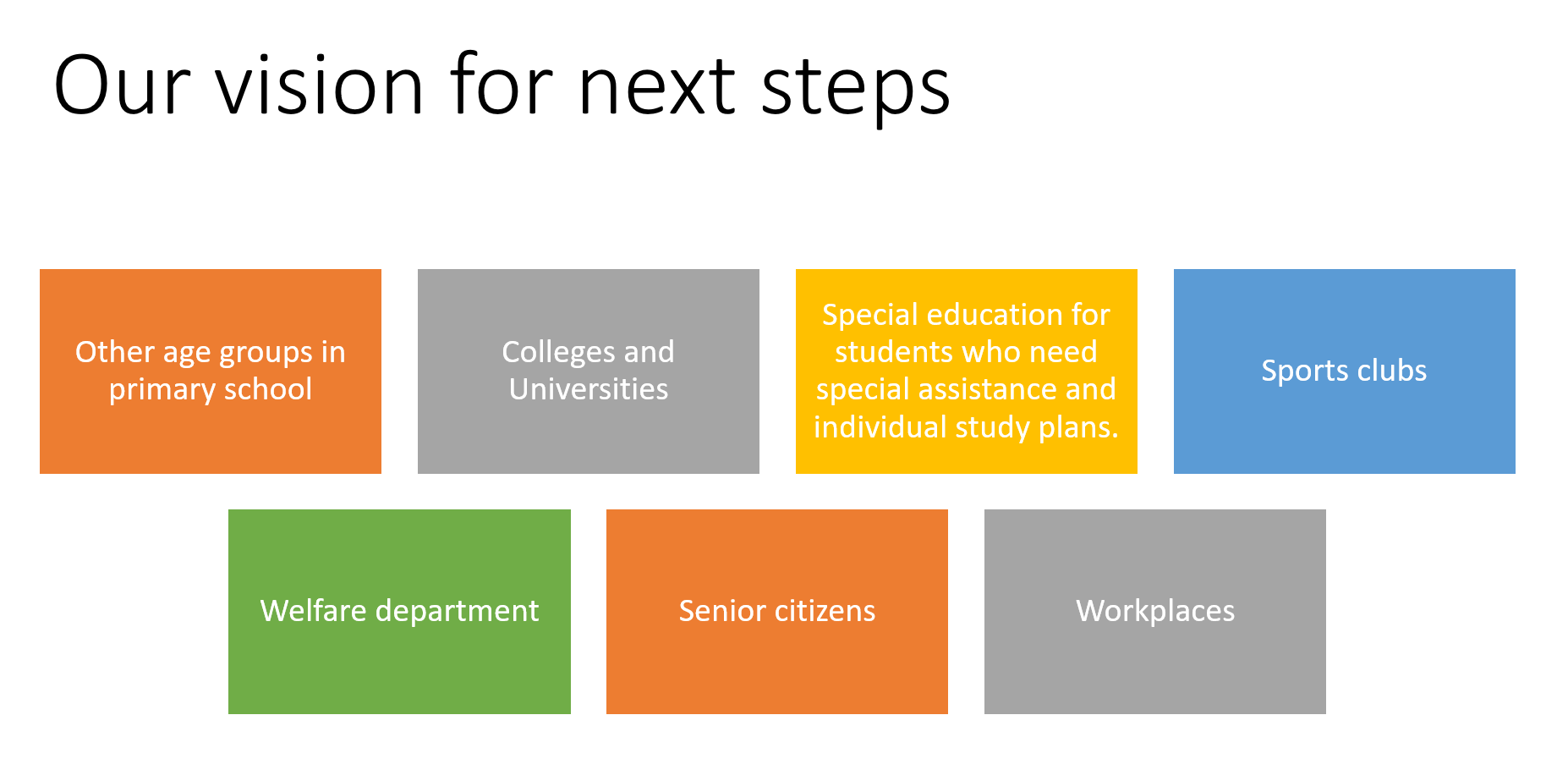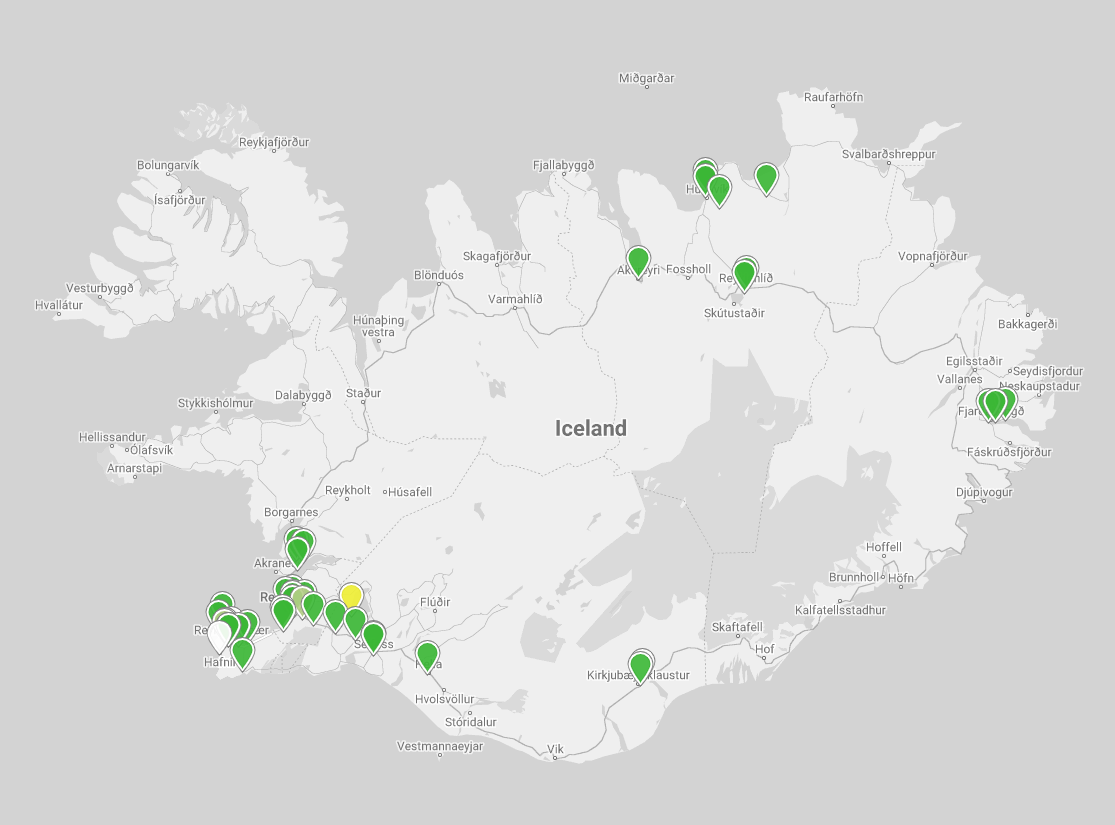Samgöngur
STEP is about changing our travel habits to reduce our reliance on cars. Changed travel habits are a critical component of Iceland's fight against climate change. Increased cycling, walking, and public transportation are the simplest ways to reduce fuel consumption and emissions. It also promotes physical activity and good health. The simplest solution is to avoid unnecessary car trips when distances are short. Far too many people drive themselves for short distances that they could easily cover by walking or cycling. This needs to change. Two mental barriers can be identified, those are are an overestimation of walking/cycling travel times and an underestimation of driving travel times.
The projects, each of which can be found in the selection bar above, are all part of STEP’s ideology and are a joint project of Vistorka and Orkusetur.
Geimstofan in Akureyri designed the project's logo and describes it as follows: “The two lines in the logo represent steps, and the lines take these steps/ideas out of the box. The symbol forms the letter S, the initial letter of STEP."
KortEr is a technological solution based on an international ideology that supports all residents being able to meet most of their needs in a short walk or bike ride from their home. The project consists of a website, app and printed map. On the website, you can find buttons to download the app for both Android and iPhone.
The name KortEr means a quarter, or 15 minutes.
Walking: When a pedestrian is selected, the area within 15 minutes of walking is displayed.
Cyclist: When the bike is selected, the area within 15 minutes of cycling is displayed.
Bus and service: When a bus or service is checked, the map shows the bus routes and the service at the relevant location.
Order a poster: You can order a printout by clicking this button. You need to fill out the form that appears. The request goes directly to
the Space Agency who will contact you back to confirm your order and delivery time.
Bar : You can drag the bar from 0 to 30 minutes, while changing the area shown on the map.
The project is a collaborative project between Vistorka, Orkusetur, the City of Reykjavík and the Ministry of the Environment and
Natural Resources .
The project SEGULLINN consists of two parts; the metal map and a portable magnetic ruler. Users can choose a starting point and see how long it takes to cycle or walk a certain distance. This makes it easy to realize how fast a person can get between places without a car. The magnet is also useful for estimating travel time from bus stops to specific destinations. The magnet bar assumes that it takes 4 minutes to cycle and 12 minutes to walk 1 km.
Public transport
Public transport is a form of transport that has long been difficult to develop in Iceland. There has been little tradition of utilizing public transport within the city as well as between parts of the country. The private car has long been considered a more attractive option in transport, as the flexibility and comfort it offers are, in the opinion of many, unequivocal. In recent years, the debate about improved public transport has become increasingly voluminous and there is increasing pressure to strengthen the competitiveness of public transport and reduce the weight of the private car.
Purpose and goals
The purpose and goal of this course is to introduce the bus to primary school children aged 10–11 and make them independent bus users. The aim is for students to realize the social and personal benefits of using the bus. Students learn about the savings from using the bus, the impact of the private car on the environment and what is gained from using public transport. They also learn to read on a route system and thus learn in their immediate surroundings, to read from timetables and to plan their journeys.
Relationship to the pillars of the National Curriculum Guide
Knowledge criteria
The student acquires knowledge and understanding of the environmental impact of transport and the main rules of conduct in public transport, and learns where to find information on public transport journeys.
Learning criteria
The student must have acquired the ability to read from public transport routes, to read timetables and to plan their journeys by public transport.
Learning outcomes
The student scale can apply the knowledge and skills he has acquired to plan his journeys and use the services of public transport independently.

Air quality indicates how good the air we breathe is. Pollution can be in the air and affect the well-being of people with asthma and underlying lung and / or heart disease. Fine particles have a greater impact on people's health than coarse particles.
The atmosphere is said to contain various particles that can be either liquid or solid. Particulate matter is the most influential factor in air quality. When we talk about particulate matter, we mean particles that are smaller than 10 µm and can float in the air and travel far distances from sources of wind effects.
Particulate matter is divided into coarse particulate matter, which is between 2.5 and 10 µm in size, and fine particulate matter, which is less than 2.5 µm. Coarse particulate matter usually originates in natural sources, but fine particulate matter is usually man-made, ie. from fuel combustion, traffic or industry.
Several factors can affect the increased concentration of particulate matter in the air, including cold winter days where air is dry and there is a high level of stillness, leaving little movement in the air. Heavy traffic and high winds can also cause a flare-up. Then coarse particles are blown into the atmosphere from the soil.
The Environment Agency of Iceland and the town of Akureyri operate an air quality meter located in Strandgata by the cultural centre of Hof. You can monitor the town's air quality at the following link:


The information above is obtained from the Environment Agency's website.





